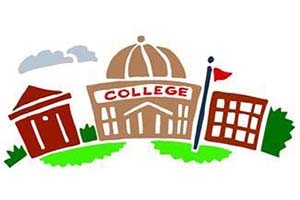Eight Characteristics of Future-Focused Community Colleges
Having an “educated workforce” now requires people to have post-secondary education and targeted skills training in order to be prepared to compete in the ever-growing global economy. And knowing that community colleges educate approximately four in ten of today’s college students, it’s impossible to overlook the potential that community colleges have in changing the face of higher education and also its contribution to the future workforce in the U.S.
Community Colleges Meet Distinctive Regional Needs
Community colleges provide an affordable opportunity for a wide range of prospective students–from those requiring remedial education, to those seeking specific skills to advance their careers, to older adults looking to satisfy long (or short) held interests, to prospective employees wanting tailored training to meet economic needs within their communities, to veterans requiring a range of supports.
With the state of higher education changing every day, it’s time for community colleges to carefully consider their many strengths and weaknesses, to be opportunistic and proactive in addressing challenges.
Challenges for Today and Tomorrow
While there are many opportunities, today’s community colleges also face a series of challenges, among them are some within and some that are outside of their control:
- Decreasing enrollment;
- Prospective students’ (often) lack of preparation for the rigors of higher education – and the attendant reputation of community colleges becoming “High School – Part 2”;
- Diminished funding by state and local governments;
- Increasing tuition rates;
- Fewer students completing their college education (for a range of reasons that aren’t merely cost-driven);
- Increased competition from for-profit educational institutions (including technical and trade institutions) making promises that are difficult to keep;
- A concern that some community college presidents are approaching retirement age, with a smallish pool of replacements in the wings.
The Eight Characteristics
In our experience with community colleges, those that have the greatest likelihood to succeed are the ones that have:
- a tangible and thoughtful mission, geared to meet the needs of today’s students, employers, and communities;
- been flexible in responding to economic and employer needs with training programs that are both skills-based and workplace-sensitive (e.g., teaching teamwork, communications, technological solutions);
- responded to the demographic composition of its community in all ways possible;
- a realistic and flexible tuition structure (if/where possible) to appeal to a range of prospective students;
- worked with its region’s employers to address the employment needs unique to them;
- collaborations with secondary schools and with other colleges/universities in the area to make the experience as positive and as seamless as possible;
- community connections, which lead to mutual support of the needs and interests of residents – particularly in areas where a community college is the primary source of higher education;
- a proactive approach to in gathering market-based information in order to support strategic planning and drive decisions about brand, marketing direction and target markets, programs and courses that hold the greatest potential and those that no longer fit future directions and needs, new and important target market segments, and general guidance for optimizing the college experience for current (and prospective) students.
For years, The Melior Group has been supplying in-depth and quantitative information and working with institutions in the higher education sector to develop marketing and business strategies for enrollment management, responsive programs and courses, and targeted marketing direction.
To learn more about our work with colleges and universities, visit our Education page or please contact Elizabeth Foley at [email protected] / 215-545-0054 x111 or Linda McAleer at [email protected] / 215-545-0054 x104.

